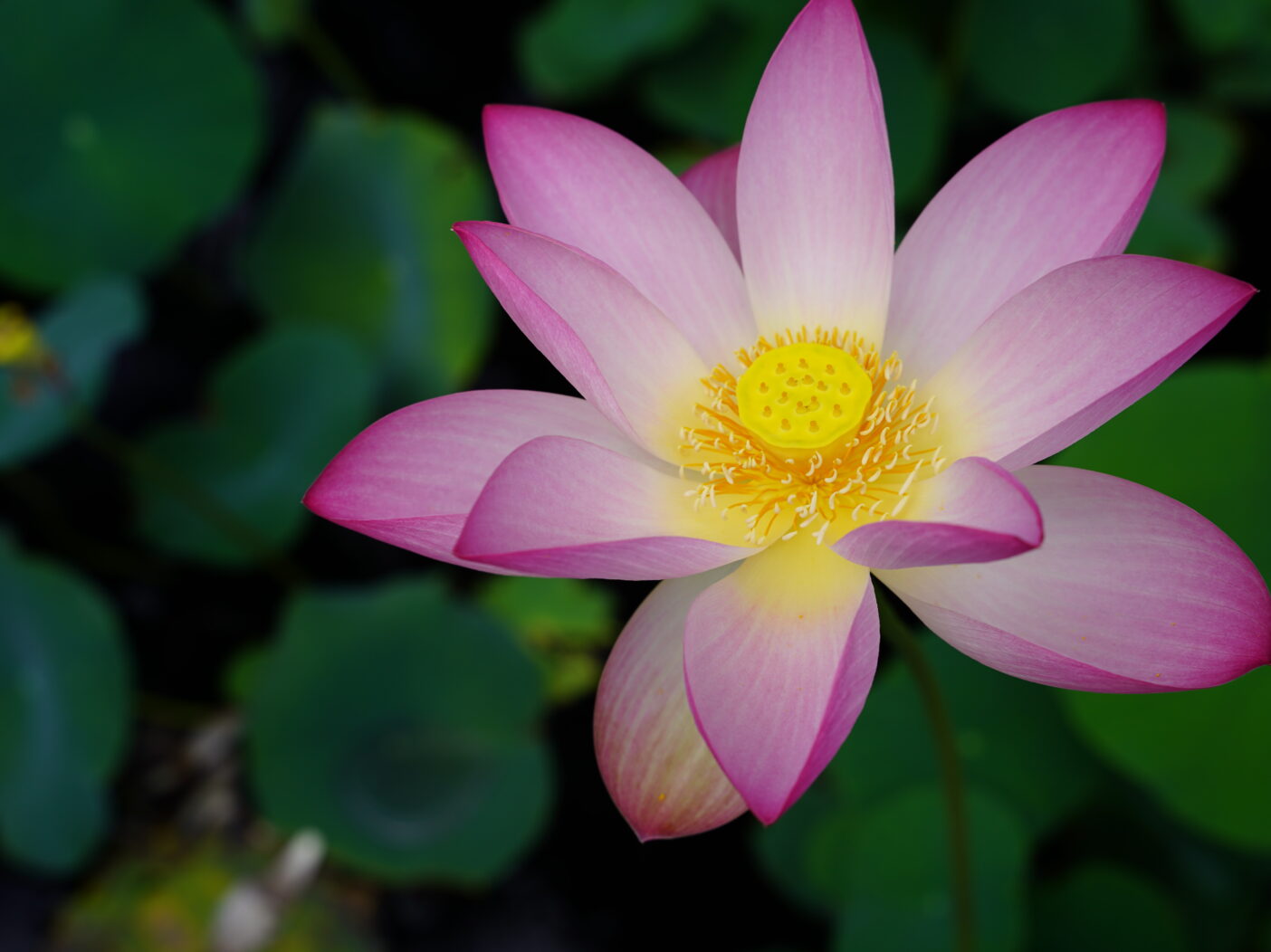
You might already appreciate the lotus for its vibrant color and captivating petals. However, you probably didn’t know that lotus inspired many of the products you use every day, from waterproof clothing to roof tiles.
The lotus (Nelumbo nucifera) has a unique superhydrophobic property, which causes water droplets to hover on its surface and roll off gently; you can see it for yourself in the Lea Asian Garden after a rainstorm. The water repels, due to factors including the leaf’s textured surface, waxy coating, and a principle known as the “contact angle” that dictates the degree to which water saturates the object it lands upon.

Dr. Wilhelm Barthlott, a German botanist, studied the plants leaves to understand how they repelled water. He coined the phenomenon “the Lotus Effect.”
Barthlott’s studies revealed the lotus’ highly textured surface, which allows air to become trapped within its cavities. This eliminates the ability for condensation to form and enables wind to move water droplets on the surface, sweeping dirt particles away in the process. He shifted his research to replicating the Lotus Effect in industrial applications.
Many others followed suit. Window manufacturers, in a nod to self-cleaning plants, have designed glass that diminishes the buildup of water droplets and dirt. Textile designers have created fabrics that wick water from the surface, easing the process of stain removal. The Atlanta-based Sto Corp. has a line of exterior paint called Lotusan® that uses the Lotus Effect principle to repel water and wash away dirt, leaving the façade clean.
NASA has even mimicked the plant’s water-repelling quality. Scientists at the agency’s Goddard Space Flight Center created a special coating that prevents dirt, dust, and liquid from sticking to the surfaces of space suits, scientific instruments, robotic rovers, radiators, mirrors, solar array panels, and other hardware used for gathering scientific data.
Kathy Cahill, the Garden’s Aquatic Areas Manager, oversees the lotus collection.
“From my perspective, the peltate (circular) shape of lotus leaves, held high out of the water, almost defies gravity,” she says. “It’s as if they’re reaching up to heaven asking for rain and when it comes, pass along the water to the pool with ease. We know the bumps on the surface assist with deflection. If you have a chance to touch a leaf, you can feel them.”

Come see these incredible plants for for yourself in the Lea Asian Garden during our upcoming Waterlily Weekend, September 3 & 4. While you’re here, join the Waterlilies & Beyond Tour, offered at 10 and 11:30am Saturday and Sunday, to learn about the role of aquatic plants in our lives, or catch a stunning interpretation of this plant in Lotus Garden I, included in the Christy Noonan: Meditations on Waterlilies exhibition, on view through September 11.
About the Author

Sarah McKeown is the Multimedia Intern for Naples Botanical Garden. Sarah is a student at Hillsdale College, and she enjoys exploring the Garden and capturing its beauty on camera. In her free time, she loves to read, sing, play pickleball and tennis, and spend time with family and friends.


